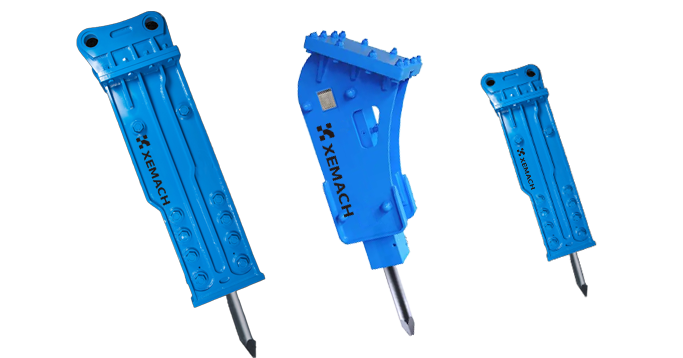The Chinese hydraulic breaker market began in the 1990s, with Korean brands entering the market first. By 2000, the demand was only about 1,200 units. However, after 2000, the market developed rapidly, with demand reaching 42,000 units by 2010. By 2023, China has become one of the top three markets globally, with demand exceeding 150,000 units.
After 2000, the Chinese market gradually recognized the advantages of construction machinery attachments, leading to a rapid increase in demand for hydraulic breakers, despite the late start. The companies with the highest market share were mostly established in the early 2000s.
The early technology for Chinese hydraulic breakers came from Korean, as Korean brands were the first to enter the Chinese market. With Doosan investing in a factory in Yantai in 1994, numerous hydraulic breaker companies flourished in Yantai. At the 2024 Bauma exhibition, many Yantai companies can be seen in the attachments hall, and the only listed hydraulic breaker company in China also hails from Yantai. Korean products targeted the low to mid-range market, initially capturing a significant market share due to regional and price advantages. Representative brands include Soosan and Everdigm. However, with the continuous development of Chinese local brands, market competition intensified, leading to a decline in the competitiveness and market share of Korean brands.
Japanese brands, represented by Furukawa, TOKU, and MKB, target the mid to high-end market. Initially entering China through direct imports, they now procure key components such as cores and cylinders from Japan, while other parts are sourced and assembled locally. Thanks to their high performance and quality, their market share remains stable.
European and American brands focus on the high-end market, with high prices and lower sales and market share in China. Major brands include Rammer, Atlas Copco, and Montabert.
Early on, Chinese domestic brands primarily assembled products by sourcing imported or locally made components, often resulting in unstable performance and unreliable quality. Since 2005, some domestic companies have mastered core production technologies and processes, achieving full localization. Their products have rapidly risen in competitiveness, capturing the majority of the domestic market share and steadily increasing their international market presence. Production is mainly concentrated in Guangdong, Jiangsu, and Shandong, the top three provinces by GDP.
Currently, for models with diameters below 175mm, domestic brands have fully replaced imports, with well-known brands offering high reliability and stability. However, for larger hydraulic breakers with diameters above 175mm, domestic reliability is slightly lower. Among the top three domestic brands, Brand B is known for its excellent reputation and stable performance with low maintenance costs. Brand D offers the most power but has higher maintenance costs. Brand E is the only publicly listed company, with the highest recognition and largest sales volume, although its overall performance is slightly inferior to Brands B and D.

